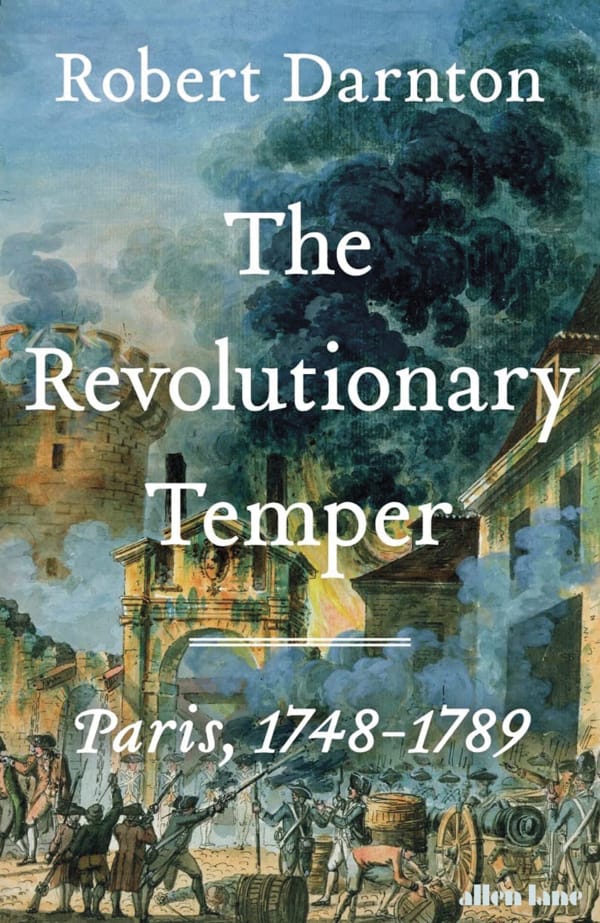Book review: The Revolutionary Temper, by Robert Darnton (Allen Lane, 2023)
Who amongst us really predicted the fall of the Berlin Wall, the overthrow of Iran’s Shah, the explosion of the Arab Spring, the victory of the Brexit referendum, or the election of Donald Trump? Who ever imagined that Guenter Schwabovski, Ruhollah Khomeini, Mohammad Bouazzi, Nigel Farage or Steve Bannon could pull the levers at the hinges of history?
Is the will of the people so invisible and inaudible? Perhaps we keep looking for clues in the wrong places (like the rear-view mirror) or among the wrong groups (especially the powers that be, who may soon cease to be).
By contrast, Robert Darnton is determined to look as hard as can be at the sources of a revolution. A lifetime’s study has taught Darnton exactly where and how to look – that is, everywhere – in assembling his analysis of the revolutionary temper in Paris from 1748 to 1789.
Darnton uses the term, temper, in both senses. He gauges moods and sentiments, then demonstrates how popular will and resolve were tempered by repression and oppression. Darnton insists that “events do not come naked into the world”; contemporary observers of trends would do well to consider adopting his scrutiny of attitudes, assumptions and anticipations.

Darnton’s focus is on “information transmitted by a multimedia system peculiar to its time and place”. His copious data bank relies on a miscellany of sources found at street level, in salons, alleys, cafes, markets and wine shops. The raw material, which forms a sort of proto-social media, is often murmurs or rumours (“dits” or “bruits” in 18th century jargon). Much could fairly be classified as fake news, intended to foment dissent, expose scandals or titillate Parisians.
Darnton invites the reader to follow him down some intriguing, illuminating rabbit holes. On the way to the Bastille, Darnton offers appraisals of mesmerism, the first balloon flight, popular songs as mnemonic devices, a diamond necklace, an attempted coup and “The Marriage of Figaro”. The art of slander and the corrosion of laughter are treated as mechanisms to erode the legitimacy of the ancien régime.
In effect, the reader is invited to connect the dots as Darnton accumulates his evidence on the revolutionary temper, working through one episode after another, building his case as ordinary folk built their sense of rage and revenge.
What, then turned the people of Paris into a force “ready to destroy one world and create another”? Contemporary authoritarians would do well to monitor closely the price of bread (or basic necessities more broadly: in India, the index would be the cost of onions). The demand for affordable bread was one of the essential claims in the Russian Revolution (along with peace and land) as it has been in bread riots around the world.
Intellectuals, too, helped forge the revolutionary temper. In pre-revolutionary France, those luminaries were not useful idiots or party ideologues but rather philosophes. Rousseau and Voltaire, Montesquieu and Diderot, all demonstrated how vulnerable an entrenched regime might be to principled, vehement ridicule.

